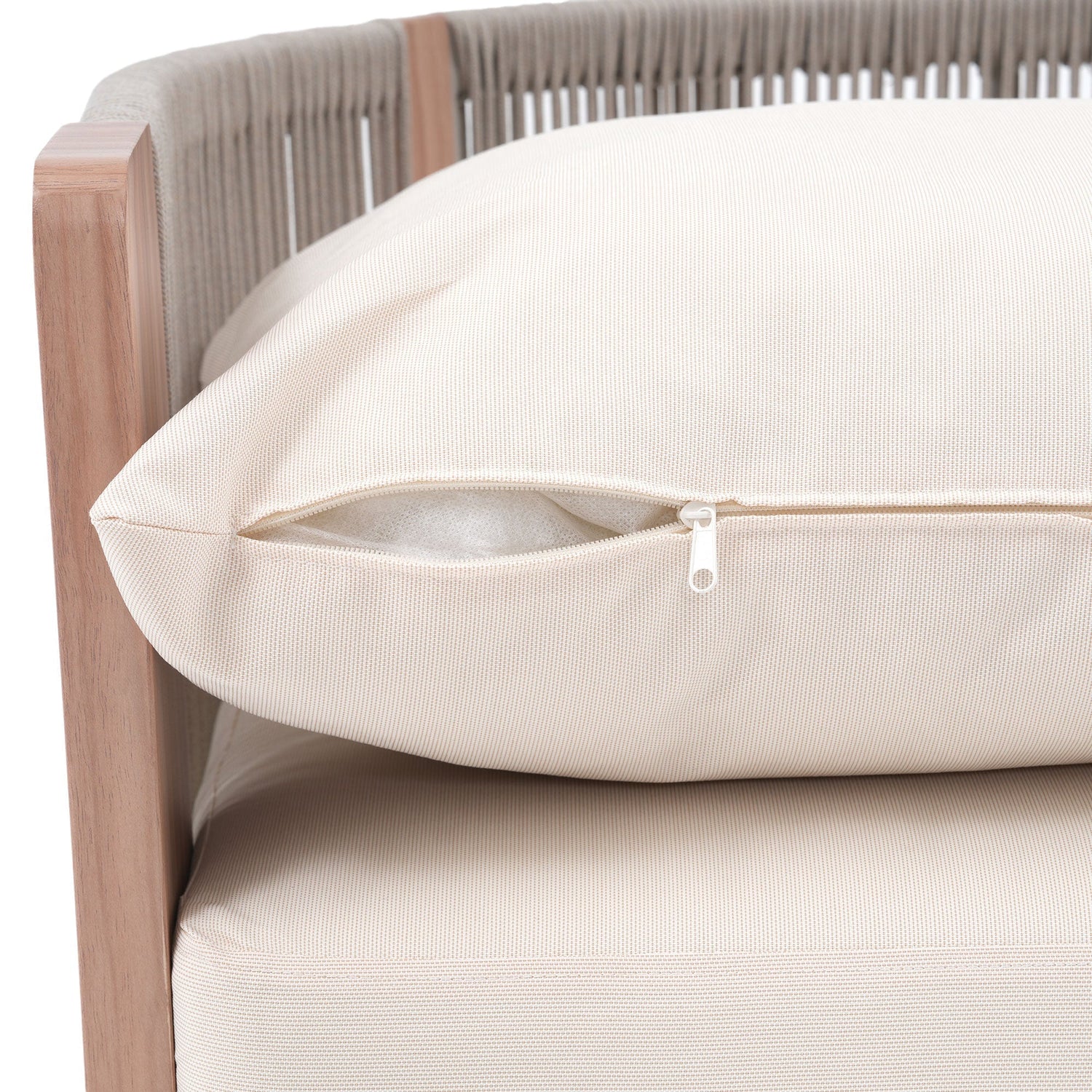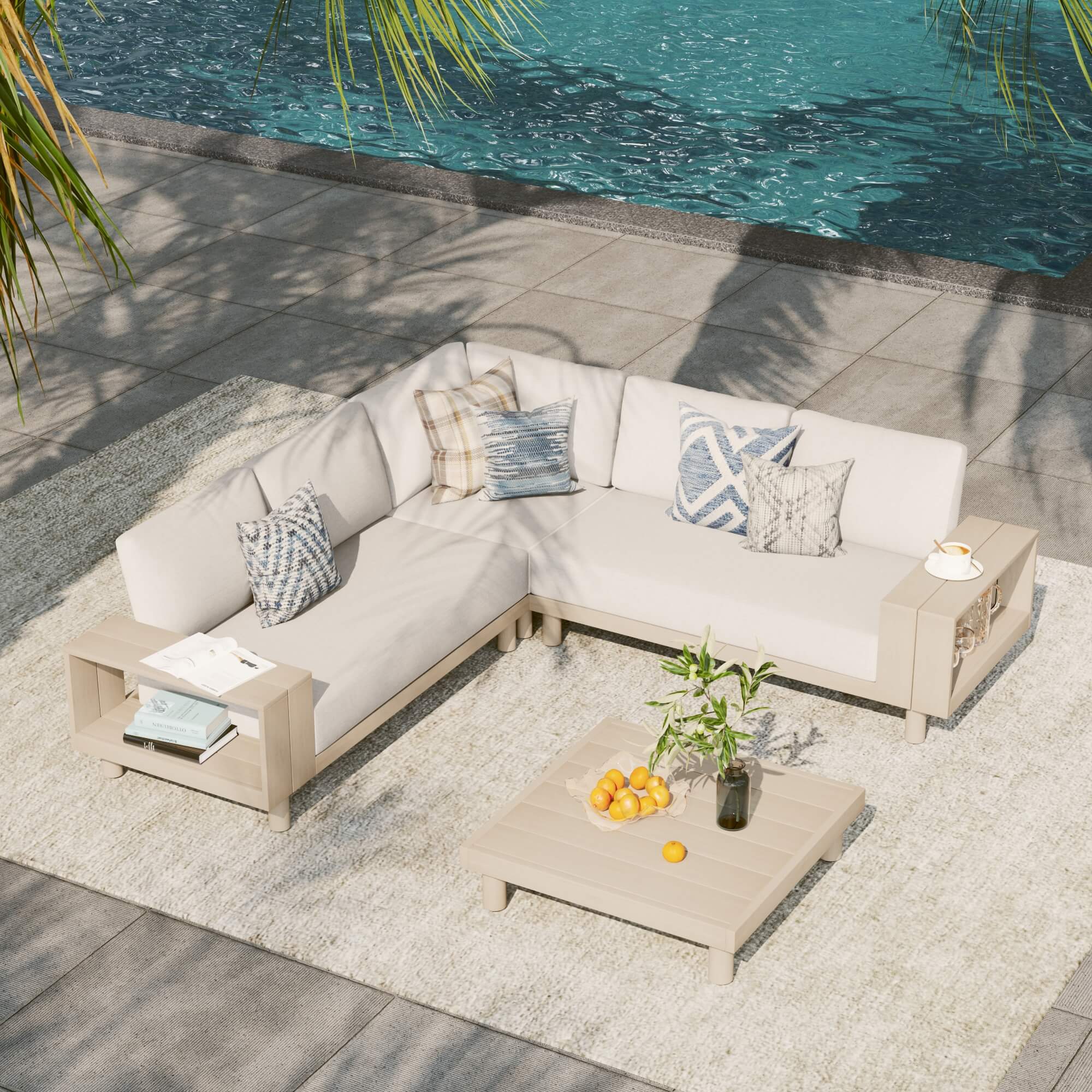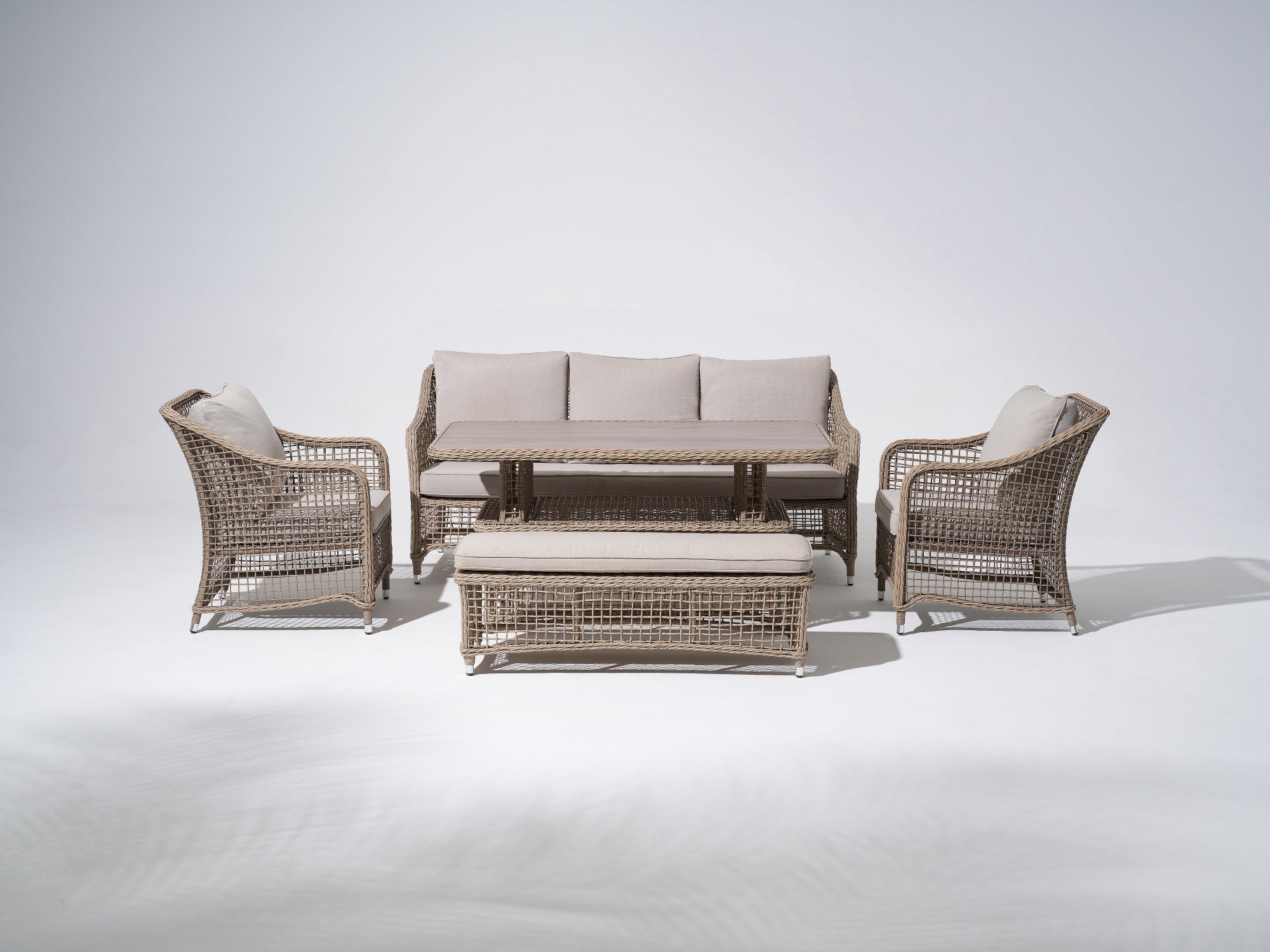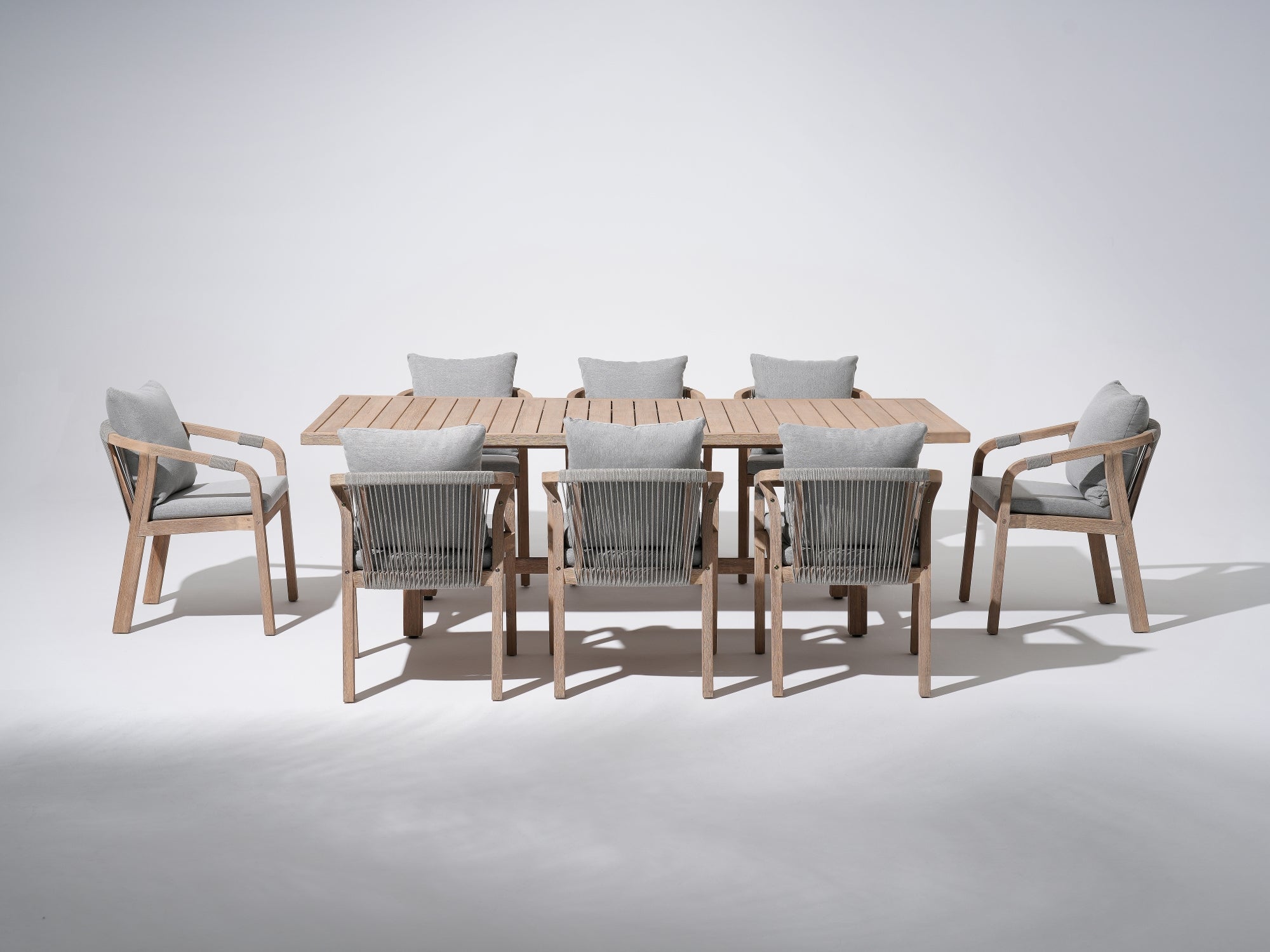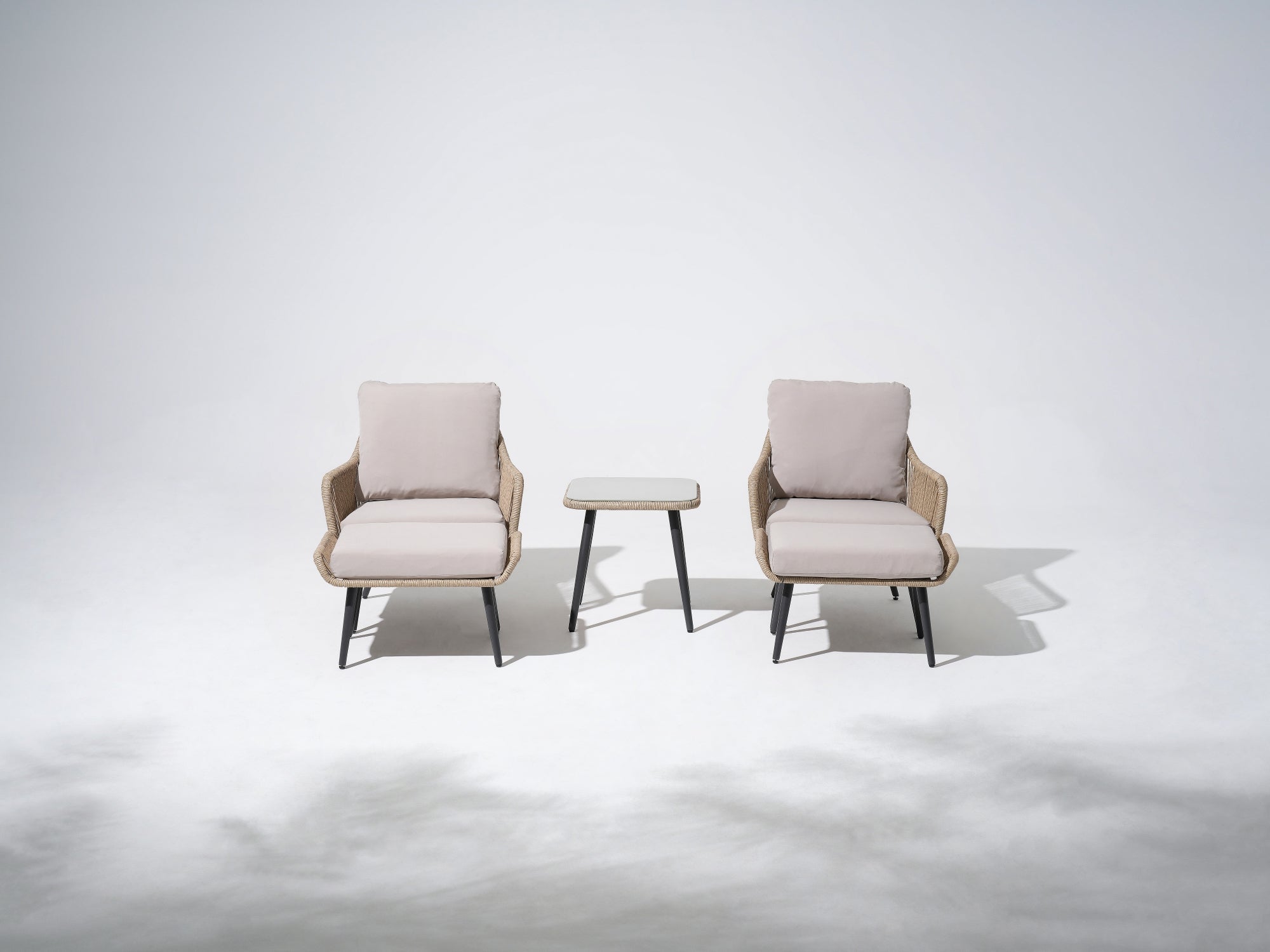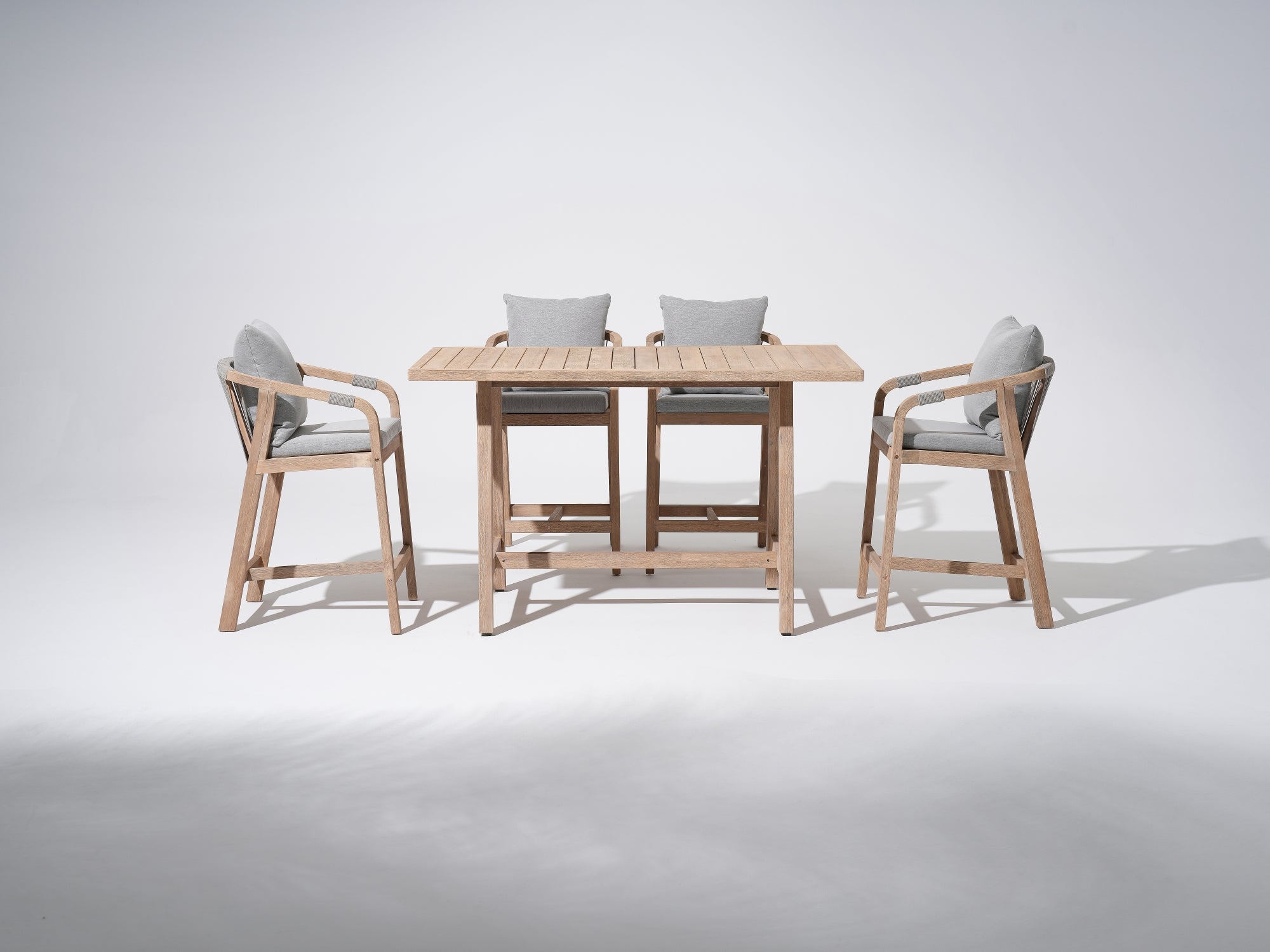Outdoor sofa cushion covers are exposed to sun, rain, dust, and stains year-round—keeping them clean is key to maintaining their durability and appearance. But here’s the catch: not all cushion cover materials are machine-washable, and using the wrong cleaning method can ruin their performance (like waterproof or UV-resistant coatings). To help you care for your outdoor cushions properly, we’ve broken down cleaning tips by material, including whether they can be machine-washed and step-by-step care instructions.
First, let's take a look at the common materials used for outdoor sofa cushion covers:





How to Clean Outdoor Furniture Cushion Covers?
Machine-Washable Materials – Easy Cleaning with Precautions

Pretreat Stains: Use a soft-bristle brush dipped in water or neutral detergent to gently scrub local stains (e.g., oil, dirt).
Machine Settings: Choose the "delicate cycle" with cold water (≤30℃). Use a neutral laundry detergent—avoid products with bleach or optical brighteners.
Dehydration & Drying: Dehydrate at a low spin speed (≤800 RPM) to prevent stretching. Hang the cover upside down in a cool, ventilated area to air-dry (avoid direct sunlight, which accelerates fiber aging). Do not tumble dry.
Key Notes
If the cushion has a foam insert, remove it first (most outdoor designs are detachable) and only wash the cover.
For recycled PET covers (like those from IKEA’s Frosåne collection), check the product label—some styles may limit washing frequency (1-2 times per season is recommended).
2. Polypropylene (PP)
Machine-Washable? ✅ Yes (delicate cycle recommended)
Step-by-Step Cleaning
Spot Cleaning: Wipe small stains with a damp cloth dipped in diluted neutral detergent. For tough stains, soak the cover in warm water (≤40℃) for 10-15 minutes.
Machine Settings: Wash with cold or warm water (avoid high temperatures, which cause shrinkage) on the delicate cycle. Use a neutral detergent.
Drying: Air-dry naturally—polypropylene dries quickly, so no long sun exposure is needed.
Key Notes
Polypropylene is durable but heat-sensitive—never tumble dry(high heat will make it stiff and misshapen).
Avoid strong alkaline detergents, as they may damage the stain-resistant coating.
3. Acrylic (Regular Styles)Machine-Washable?✅ Yes (check product instructions first)
Step-by-Step Cleaning
Pretreat: Moisten stained areas, apply a small amount of neutral laundry detergent, and let it sit for 5 minutes before gently rubbing.
Machine Settings: Wash in cold water on the delicate cycle. Use a detergent designed for outdoor fabrics (or neutral laundry detergent). Avoid washing with dark clothes (to prevent slight fading—wash separately for the first use).
Drying: Hang upside down in a ventilated area to dry. Avoid direct sunlight to preserve color fastness.
Key Notes
Some regular acrylic covers have a waterproof coating—frequent machine washing may reduce water resistance. Prioritize spot cleaning, and limit machine washing to once a month.
Never use bleach or oxidizers—they will damage the fiber structure.
Materials Requiring Caution or No Machine Washing – Prioritize Spot Cleaning
These materials (often high-end or specially coated) can be damaged by machine washing—including ruined coatings or distorted fabric. Stick to spot cleaning, and only machine wash if the brand explicitly allows it. 1. Solution-Dyed AcrylicMachine-Washable?⚠️ Proceed with caution (spot cleaning recommended)
Step-by-Step Cleaning
Daily Care: Vacuum the surface weekly with a soft-brush attachment to remove dust.
Spot Cleaning: For stains, wipe gently with a damp cloth dipped in warm water mixed with neutral detergent (1:20 ratio). For tough stains, repeat wiping, then clean residual detergent with water.
Special Cases: If machine washing is necessary, use cold water and the delicate cycle—only with water or outdoor-specific detergent. Air-dry immediately after washing; do not dehydrate (to avoid coating peeling).
Key Notes
The biggest advantage of solution-dyed acrylic is its high color fastness, but its coating is delicate—frequent machine washing damages stain-resistant and waterproof coatings, shortening its lifespan.
Never use alcohol, bleach, or fabric softeners—they will corrode the fabric.
2. Sunbrella FabricMachine-Washable?⚠️ Not recommended (official guidelines suggest spot cleaning)

Step-by-Step Cleaning
Daily Maintenance: Rinse surface dust with water (use a gentle shower spray) and air-dry.
Stain Treatment:
- Liquid stains (e.g., drinks): Blot moisture with a dry cloth immediately, then rinse with water and air-dry.
- Tough stains (e.g., oil, mold): Apply Sunbrella-specific cleaner (or neutral detergent mixed with warm water), gently scrub with a soft brush, then rinse thoroughly.
Deep Cleaning: For large-area dirt, remove the cover and scrub the entire surface with a soft brush dipped in diluted detergent. Rinse with water and hang to dry (avoid folding to prevent water spots).
Key Notes
Sunbrella is durable, but machine washing (especially high-speed dehydration) can distort the fabric texture and damage the coating—the official brand explicitly discourages machine washing
Treat mold promptly: Long-term dampness causes mold growth. After cleaning, ensure the fabric dries completely (ventilate in a cool area for 24 hours).
3. PVC-Coated FabricMachine-Washable?❌ No
Step-by-Step Cleaning
Daily Care: Wipe surface dust with a damp cloth, or rinse with water (PVC is highly waterproof, so water won’t damage it).
Stain Cleaning: Wipe stains with a damp cloth dipped in warm water mixed with neutral detergent. For tough stains, gently rub with a small amount of non-abrasive toothpaste, then clean with water.
Maintenance: Dry the surface with a clean cloth after cleaning to avoid long-term water accumulation (which can cause coating peeling at the edges).
Key Notes
PVC coating is non-breathable—machine washing causes the fabric and coating to separate and wrinkle. High temperatures or harsh detergents will also make PVC stiff and cracked.
Never use a hard-bristle brush or steel wool—they will scratch the coating and destroy its waterproofness.
General Cleaning Tips (For All Materials)- Treat Stains Immediately: Outdoor cushions easily get drink spills, mud, or bird droppings. Clean stains within 12 hours to prevent them from seeping into the fabric (especially blended natural fibers, which are prone to permanent marks).
- Avoid Direct Sun Exposure: Even UV-resistant materials age faster under intense sunlight (e.g., midday summer sun). After cleaning, air-dry in a cool, ventilated area, or use a sunshade over the cushions.
- Regular Maintenance: Vacuum dust weekly and rinse the entire cover with water once a month (suitable for waterproof materials like PVC or Sunbrella) to extend its lifespan.
-
Check the Product Label: Different brands may use special treatments (e.g., extra waterproof or anti-microbial coatings). Always follow the washing symbols on the label (e.g., washable, water temperature limits, bleach prohibition) for the best results.



